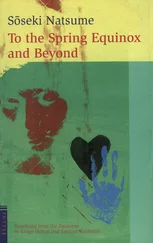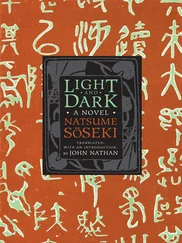Natsume Soseki - Kusamakura
Здесь есть возможность читать онлайн «Natsume Soseki - Kusamakura» весь текст электронной книги совершенно бесплатно (целиком полную версию без сокращений). В некоторых случаях можно слушать аудио, скачать через торрент в формате fb2 и присутствует краткое содержание. Жанр: Старинная литература, на английском языке. Описание произведения, (предисловие) а так же отзывы посетителей доступны на портале библиотеки ЛибКат.
- Название:Kusamakura
- Автор:
- Жанр:
- Год:неизвестен
- ISBN:нет данных
- Рейтинг книги:4 / 5. Голосов: 1
-
Избранное:Добавить в избранное
- Отзывы:
-
Ваша оценка:
- 80
- 1
- 2
- 3
- 4
- 5
Kusamakura: краткое содержание, описание и аннотация
Предлагаем к чтению аннотацию, описание, краткое содержание или предисловие (зависит от того, что написал сам автор книги «Kusamakura»). Если вы не нашли необходимую информацию о книге — напишите в комментариях, мы постараемся отыскать её.
Kusamakura — читать онлайн бесплатно полную книгу (весь текст) целиком
Ниже представлен текст книги, разбитый по страницам. Система сохранения места последней прочитанной страницы, позволяет с удобством читать онлайн бесплатно книгу «Kusamakura», без необходимости каждый раз заново искать на чём Вы остановились. Поставьте закладку, и сможете в любой момент перейти на страницу, на которой закончили чтение.
Интервал:
Закладка:
Yet the joys of the poet do not lie simply in immersing oneself in some moment, and becoming one with some particular object. At times one may become the petal of a flower or a pair of butterflies, or again like Wordsworth one may let one’s heart be tossed in the blessed breeze as a crowd of daffodils. But there are also times when the ineffable beauty around one, some presence one can scarcely grasp, mysteriously masters the heart. One person wil speak of being brushed by the shimmering winds of heaven and earth. Another wil say he hears in his soul the harmonies of nature’s ethereal harp. Yet another may describe lingering in some incomprehensible and inexplicable realm without boundary or limit, or wandering in the misty far reaches of the world. People may describe it as they wil . Into just such a state of mind have I fal en as I sit here at my desk, spel bound and with a vacant gaze.
Clearly I am thinking about nothing. I am most certainly looking at nothing. Since nothing is present to my consciousness to beguile me with its color and movement, I have not become one with anything. Yet I am in motion: motion neither within the world nor outside it—simply motion.
Neither motion as flower, nor as bird, nor motion in relation to another human, just ecstatic motion.
If I were pressed to explain, I would want to say that my heart is moving with the spring. Or that some spirit—compounded of al the colors of spring, its breezes, its various elements, and its many voices, condensed, kneaded together into a magic potion that is then dissolved into an elixir in the realm of the immortals and condensed to a vapor in the warmth of Shangri-la’s sunlight—such a spirit has slipped in, unbeknownst to me, through my pores and has saturated my heart. Normal y some stimulant provokes a sense of oneness, and this is why the experience is enjoyable. But in this experience of mine I can’t say what I’ve merged with, so it entirely lacks a specific stimulant. For this very reason, however, it produces a fathomless and inexpressible pleasure. I’m not speaking of some superficial and boisterous elation, waves tossed in the abstracted mind by a pummeling wind. No, rather my state is like a vast ocean that moves between one far continent and another above invisible depths of ocean floor. It lacks the vigor that this image suggests—but that is al to the good, for where great energy arises, a hidden fear of the time when that energy consumes itself and comes to an end is always present. In normal circumstances there is no such fear. And in my present, even more tenuous state, I am not only far removed from al such sorrow at the thought of a dwindling of sustaining energy, I am indeed quite freed from the everyday condition of man, in which the heart knows judgment of good and bad, right and wrong. I say that my state is “tenuous†only in the sense that it is ungraspable, not to suggest that it is unduly feeble. Poetic expressions such as “sated with tranquil ity†or “sunk in a halcyon calm†perhaps most ful y and finely express such a state of mind.
How might I go about expressing this state in terms of a picture? No ordinary picture could embody it, that’s quite certain. What we express with the word “picture†amounts to no more than the scene before our eyes, human figures or landscape, translated either just as it appears or through the filtering of aesthetic vision onto the surface we work on. If a flower looks like a flower, if water looks like water, and if human figures behave in the picture like humans, people consider the work of the picture done. A greater artist, however, wil impart his own feelings as he depicts the phenomena and bring them to vivid life on the canvas. Such an artist endeavors to imbue the object he perceives with his own particular inspiration, and he does not feel he has created a picture unless his vision of the phenomenal world leaps from the brush as he paints. He wil not venture to cal a work his own if he does not feel that he has seen a certain thing in a certain way, felt in a certain way about it, and expressed that way of seeing and feeling with al due respect to the masters of his art, drawing sustenance from the old legends while nevertheless creating a work that is both utterly true and thoroughly beautiful.
These two kinds of artist may differ in their objective and subjective approach and in their depth, yet before either one touches brush to paper, he wil wait for a clear stimulus from the outside world. But the subject I wish to depict is not so clear. Though I use al my powers of sensation in order to find an equivalent for it in the outer world, no form, no color, indeed no light shade or dark, no firm or delicate line, suggests itself. What I feel does not originate from outside; or if it does, it does not arise from any single scene present to my eye—I can point to no clearly visible cause for it. Al that exists is a feeling. How might I express this feeling in terms of a picture? Or rather, what physical form might I borrow to embody it in a way that would make sense to others? This is the question.
In an ordinary picture, it’s sufficient to portray the object; feeling is not in question. In the second kind of picture, the object must be compatible with feeling. In the third, al that exists is the feeling, so one is forced to choose some objective phenomenon as its expressive correlative. Such an object, however, is difficult to discover and, once discovered, difficult to make coherent. And even when it is coherently conceived, it often manifests itself in a form radical y different from anything found in the natural world. An ordinary person, therefore, would not perceive it as a picture. Indeed, the artist himself acknowledges that it is not a reproduction of some select part of the natural world; he deems it a success if the feeling evoked at the moment of inspiration in some way translates itself onto the canvas, imparting a certain life to the mood that lies outside the sensuous realm, which is the work’s true subject. I don’t know whether any master has ever completely succeeded in performing this difficult task. If I were to name a few works that have approached success in this way, I could point to Wen Tong’s bamboo, and the landscape painting of the Unkoku School. The scenes created by Taigado and the human figures of Buson also come to mind. 1 As for Western artists, their eyes are mostly fixed on the external phenomenal world, and the vast majority have had no truck with the higher realms of noble refinement, so I have no idea how many may have been able to impart some spiritual resonance to their depiction of an object.
Unfortunately, the sort of grace and elegance that Sesshu and Buson strove to depict is very simple and rather monotonous. 2 I could never approach these masters for their power of brushstroke, but the feeling behind my intended picture is more complex, and therefore difficult to summon and express within the single frame of a picture. I shift position, from chin propped on hands to leaning on folded arms on the desk before me, but stil nothing dawns. I must somehow find the hues, forms, and tones that wil stir in me as I paint, the sudden recognition that cries Ah, here it is! This is myself! I must paint with the lightning bolt of instantaneous and joyous discovery of a mother who has journeyed through al the realms of the land in search of her vanished son, never forgetting him for an instant, sleeping or waking, and then one day suddenly chances upon him at a crossroads. This is no easy task. If I can achieve it, the opinion of others wil matter nothing to me. They can scorn and reject it as a painting, and I wil feel no resentment. If the combination of colors I produce represents even a part of my feeling, if the play of the lines expresses even a fraction of my inner state, if the arrangement of the whole conveys a little of this sense of beauty, I wil be perfectly content if the thing I draw is a cow, or a horse, or no definable creature at al . I wil be content—and yet I cannot do it. I lay the sketchbook on the desk and gaze at it, deep in thought, until my eyes seem to bore right through the page before me, but stil no form occurs to me.
Читать дальшеИнтервал:
Закладка:
Похожие книги на «Kusamakura»
Представляем Вашему вниманию похожие книги на «Kusamakura» списком для выбора. Мы отобрали схожую по названию и смыслу литературу в надежде предоставить читателям больше вариантов отыскать новые, интересные, ещё непрочитанные произведения.
Обсуждение, отзывы о книге «Kusamakura» и просто собственные мнения читателей. Оставьте ваши комментарии, напишите, что Вы думаете о произведении, его смысле или главных героях. Укажите что конкретно понравилось, а что нет, и почему Вы так считаете.












